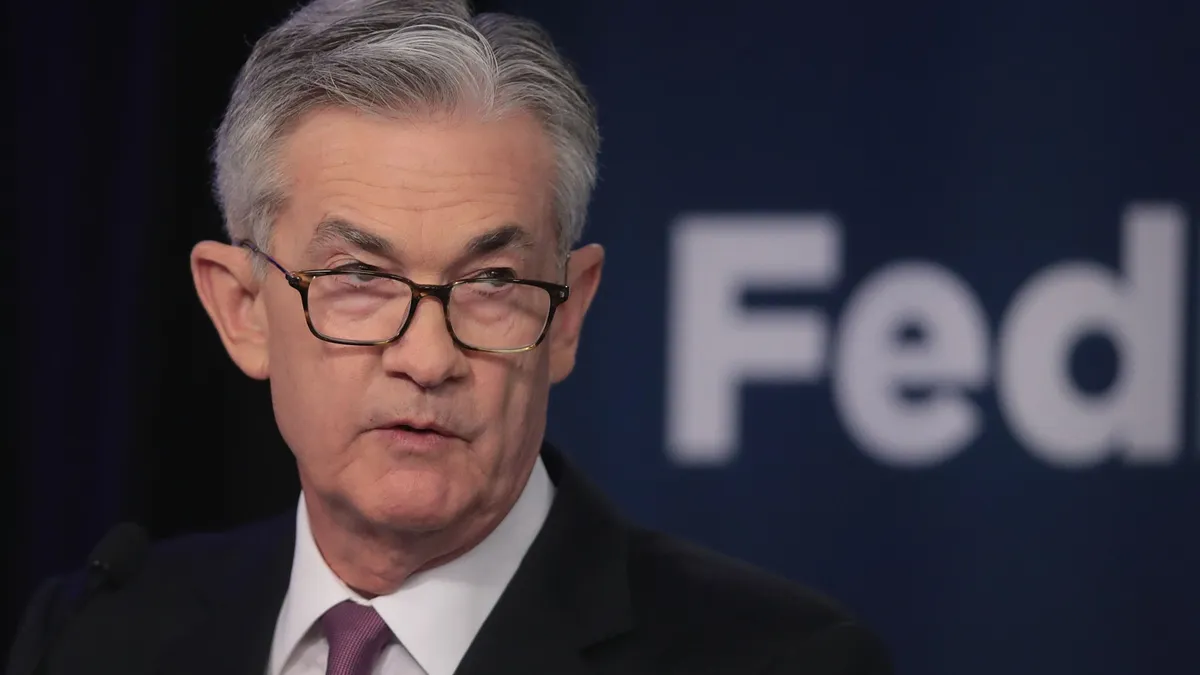Dive Brief:
- Federal Reserve Chair Jerome Powell flagged gains in the fight against inflation but said policymakers want more confidence that price pressures are steadily falling before trimming the main interest rate from a 23-year high.
- “We’ve made quite a bit of progress in bringing inflation back down to our target,” Powell said Tuesday in a panel discussion, while adding “we want to be more confident that inflation is moving sustainably down toward 2%,” the Fed’s target level.
- In an encouraging sign for slowing inflation, the job market shows signs of loosening from the pandemic-induced shortages two years ago that pushed up wages, Powell said. The labor market “looks like it’s doing just what you would want it to do, which is to cool off over time — not quickly, not suddenly, not steeply.”
Dive Insight:
Powell’s comments coincided with the release of Labor Department data showing that job openings in May rose to a higher-than-expected 8.14 million from the prior month’s 7.92 million, the lowest total since February 2021.
The quits rate — a measure of workers’ ability or willingness to switch jobs — was 2.2 in May for the seventh consecutive month. Unemployment, meanwhile, has risen from a 50-year low of 3.4% last year to 4% in May.
“Look at the U.S. labor market — we’ve seen a pretty substantial move toward better balance than we had a couple of years ago when labor was in extreme shortage,” Powell said. “What you see now is an unemployment rate that’s moving back up toward a more sustainable level.”
Following Powell’s comments traders in interest rate futures increased the odds that the Fed will cut its benchmark interest rate by a quarter point at its September meeting to 63% from 60% on Monday, according to the CME FedWatch Tool. Policymakers since July 2023 have held the main rate at a range between 5.25% and 5.5%.
“The labor market is softening modestly, but it is not breaking,” Scott Helfstein, head of investment strategy at Global X, said Tuesday in an email. “The Club Med Fed can continue to sit back and relax as long as the job numbers remain reasonably decent.”
Powell voiced caution about future monetary policy, saying the Fed needs to navigate a narrow strait as it times the first cut in the federal funds rate of this policy cycle.
“We’re well aware that if we go too soon, that we can undo the good work we’ve done to bring down inflation, and if we go too late, we could undermine the recovery,” he said. “We’re aware that we have two-sided risks now, more so than we did a year ago.”
The Fed’s preferred inflation measure — the personal consumption expenditures price index — rose last month at a 2.6% annual rate. It will likely fall to “the low 2s” next year and hit the central bank’s 2% target in 2026, Powell predicted.
Policymakers have put the economy “on a path to 2%” inflation, Chicago Fed President Austan Goolsbee said Tuesday, noting that disinflation when not accompanied by a cut in the federal funds constitutes a policy tightening.
“If you just hold rates where they are while inflation comes down, you’re tightening,” he told Bloomberg Television. “You should do that by decision, not by default.”












